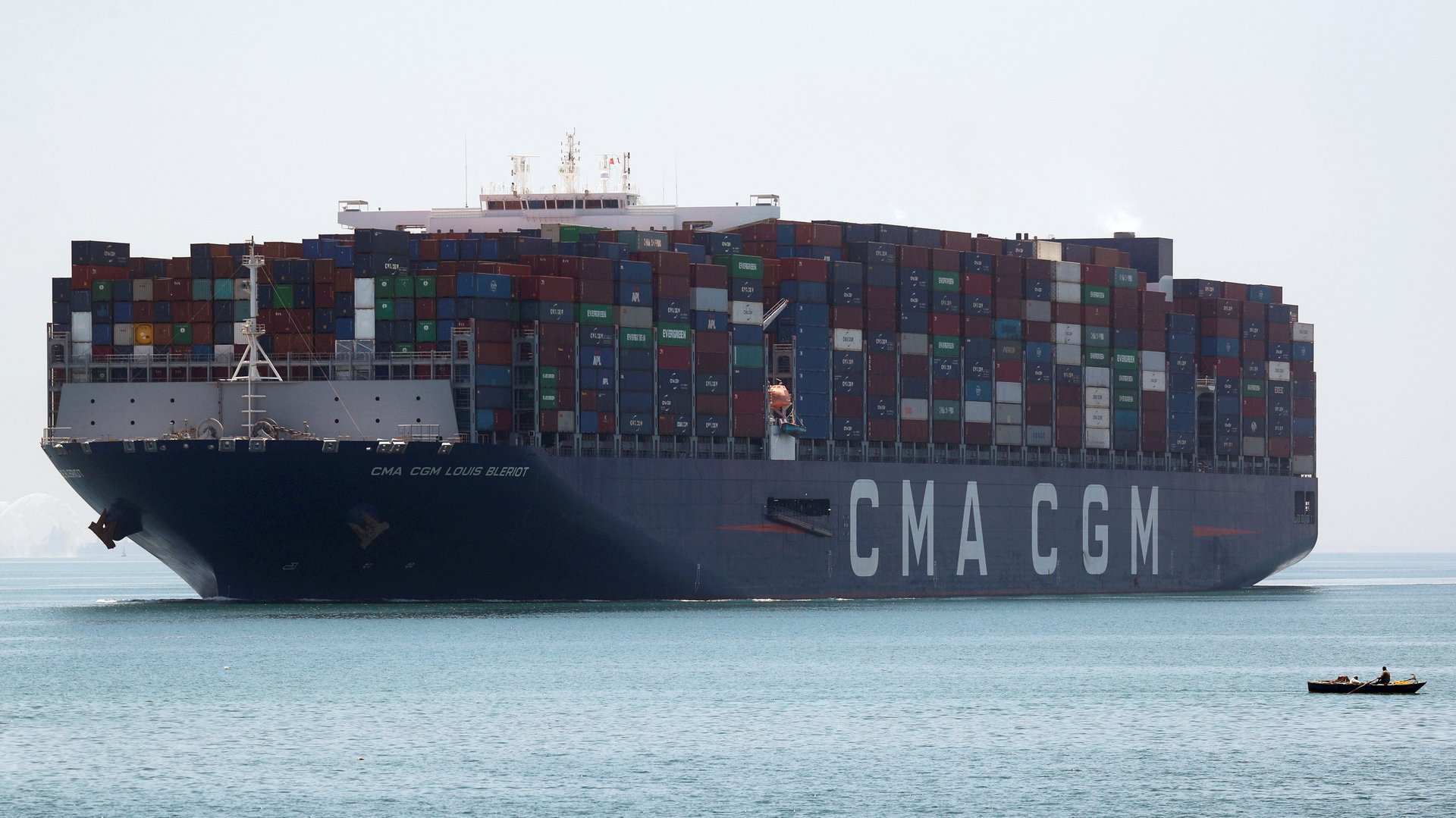One of the world’s largest shipping lines used its pandemic windfall to start an airline
CMA CGM is the third largest shipping company in the world. The French conglomerate has had an enviable run during the past 18 months of pandemic-induced supply chain chaos, which have driven freight prices to record heights. Last quarter, the company made a $3.5 billion profit, roughly 25 times higher than the same period last year.


CMA CGM is the third largest shipping company in the world. The French conglomerate has had an enviable run during the past 18 months of pandemic-induced supply chain chaos, which have driven freight prices to record heights. Last quarter, the company made a $3.5 billion profit, roughly 25 times higher than the same period last year.
In February, the shipping line decided to invest some of its windfall by buying four used Airbus jets and starting a new airline, inventively named CMA CGM Air Cargo. On Sept. 29, the company doubled down on that decision and bought two new Boeing 777 Freighters. It’s no small investment: Each of the new planes costs about $350 million—or, to put that another way, about eight times the quarterly profit CMA CGM was making before the pandemic.
GMA CGM chairman Rodolphe Saadé said the shipping giant was acting “in response to the growing demand from our customers for agile logistics solutions,” in a press release announcing the new airline’s launch—evidently alluding to how desperate retailers have become to avoid lengthy delays at backlogged ports.
CMA CGM’s bet on air freight may be a harbinger of a broader shift in how goods move through the global economy. The current disarray in maritime supply chains has created a spike in demand for cargo flights, which can deliver goods much faster than ships, albeit at higher prices. By launching its own airline, one of the biggest players in shipping has indicated it believes the pandemic bump in air freight will have some long-term staying power.
CMA CGM’s pandemic windfall
The pandemic has been a boon for many of the world’s largest shipping lines. As people began spending more time at home and spending less money on travel, restaurants, and other services, they began diverting more of their cash to ordering products online. The resulting spike in consumer demand created a rush to manufacture more goods and ship them to customers, which sent freight prices—and shipping profits—through the roof.
Although CMA CGM has seen its profits climb 77-fold from the $45 million it made in the third quarter of 2019—before the first news stories of mysterious cases of pneumonia in Wuhan, China began circulating—it hasn’t actually been shipping significantly more cargo. The company’s total cargo volume rose just 3% in that period.
Instead, the profitability of its cargo routes has climbed steadily. The shipping line’s EBITDA ratio—a rough measure of how much revenue a company accounts for as profits—reached 43.2% last quarter, almost triple the margin in 2019. The company has made about $7.3 billion in profits since the beginning of 2020.
Air freight’s fate hinges on tourism and business travel
Mark Szakonyi, an analyst at IHS Markit and an executive editor for maritime and trade news at the Journal of Commerce, sees CMA CGM Group’s move as a natural response to the pandemic’s impact on supply chains. In the short-run, he said, putting new cargo planes in the sky is a safe business proposition because the pandemic has created a temporary shortage of air freight capacity and rates have roughly doubled. Around half of air cargo used to travel in the bellies of passenger planes, and many of those flights have been grounded.
But when international tourism and business travel eventually rebounds, there will be plenty of cargo space on passenger flights once again. The extra freight capacity could cause prices to drop and make it harder for newcomers like CMA CGM to make money—unless companies get used to the speed of air deliveries and start moving more of their goods by plane after the pandemic.
CMA CGM will have plenty of well-financed rivals. Amazon is building out an air fleet to realize its ambitions of delivering more of its products to customers in just one day. The e-commerce giant’s Prime program trained customers to expect two-day shipping and forced the rest of the retail world to fall in line. Now, it looks poised to do the same with next-day deliveries—and that creates an opportunity for air cargo.
“If e-commerce is going to deliver products the next day, there is a good chance that it’s going to go by air,” said Eliot Lees, the managing director for clean transportation at the consulting firm ICF.